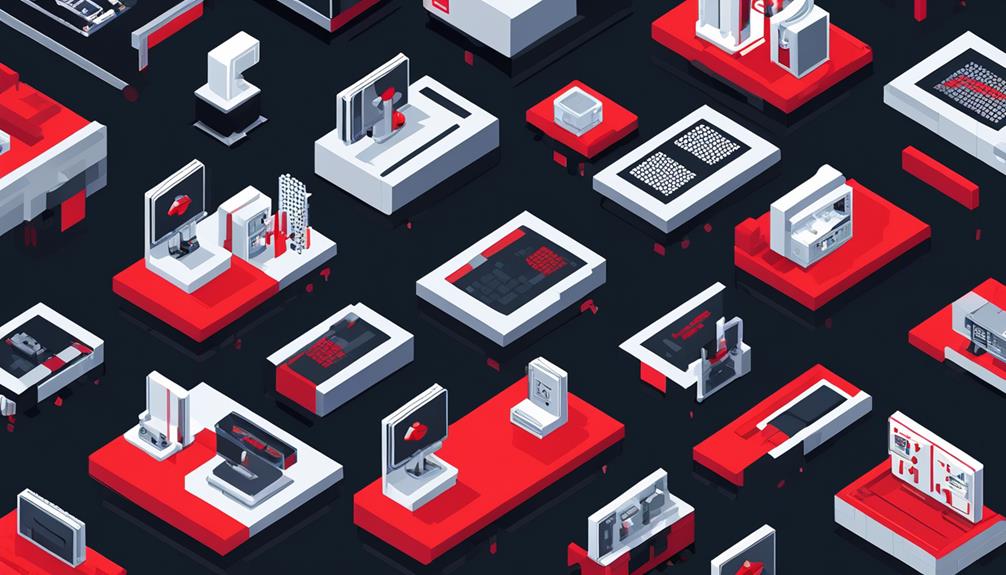In the rapidly evolving landscape of edge computing, redundancy in hardware is a crucial aspect that cannot be overlooked. As organizations increasingly rely on edge systems to process and analyze data at the edge of the network, ensuring the uninterrupted operation of these systems becomes paramount.
Redundancy strategies play a vital role in mitigating potential failures and maintaining the continuity of critical edge computing applications. However, implementing redundancy in edge hardware is not without its challenges. It requires careful consideration of various factors, such as power and cooling, as well as the selection of appropriate components.
In this discussion, we will explore the importance of redundancy in edge computing systems, delve into key components and best practices for implementing redundancy, and examine the future trends in redundancy for edge computing hardware. Join us as we unravel the intricacies of redundancy in the world of edge computing and discover how it contributes to the reliability and resilience of these systems.
Key Takeaways
- Mirrored servers provide fault tolerance and high availability in critical systems.
- Redundancy designations (N, N+1, 2N, 2N+1) determine the level of redundancy in edge systems.
- Higher levels of redundancy (2N, 2N+1) are typically chosen for critical systems.
- Redundant power supply is essential for continuous operation and protection against hardware failures.
Redundancy Strategies for Edge Computing Hardware
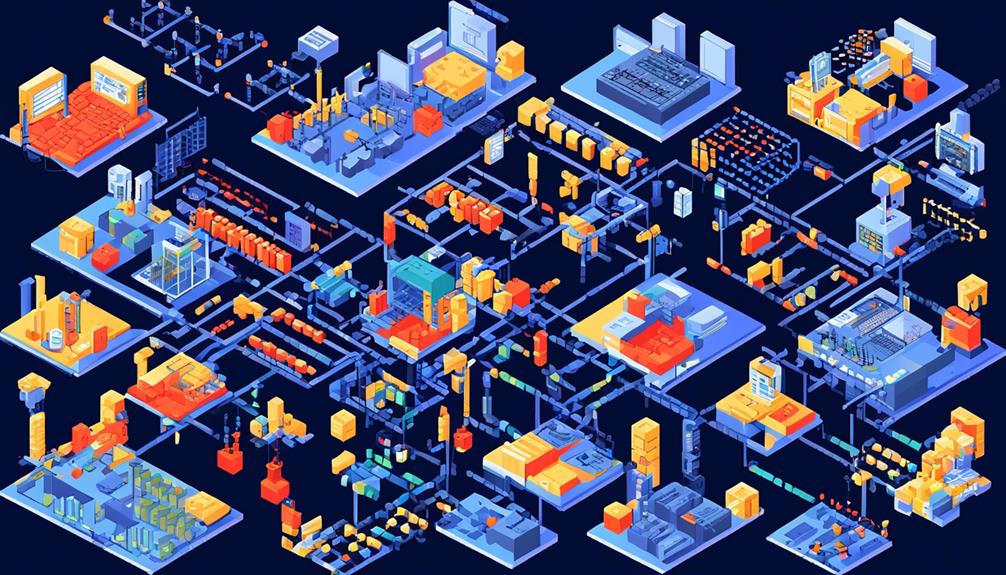
Redundancy strategies for edge computing hardware are essential to ensure uninterrupted operation and minimize downtime in distributed and geographically diverse environments. Edge devices, due to their distributed nature and wide geography, require new thinking in terms of redundancy and replication.
One common strategy is the use of mirrored servers, which provide fault tolerance, protect against hardware failures, and ensure high availability in critical systems.
Edge devices offer several advantages, including reduced latency, improved performance, and local processing capabilities, which are particularly valuable in IoT applications and remote locations. However, these benefits also introduce challenges in terms of redundancy. To address these challenges, redundancy designations such as N, N+1, 2N, and 2N+1 are used in edge systems.
The N designation refers to a non-redundant configuration, where there is a single device without any backup. N+1 denotes a configuration where there is one additional device as a backup, providing redundancy in case of failure. The 2N configuration refers to a fully redundant setup, with two devices that can independently handle the workload. Lastly, the 2N+1 configuration includes an additional backup device, ensuring even higher levels of redundancy.
The choice of redundancy strategy depends on various factors, including the industry, environment, and cost considerations. Critical systems that require continuous operation and minimal downtime would typically opt for higher levels of redundancy, such as 2N or 2N+1. On the other hand, less critical systems might choose a lower level of redundancy, such as N+1.
Importance of Redundancy in Edge Systems
When it comes to edge systems, reliability and fault-tolerance are of utmost importance. Redundancy plays a critical role in ensuring continuous operation and minimizing the risk of failures.
Reliability in Edge Systems
Ensuring the reliability of edge systems is of paramount importance, requiring careful consideration of redundancy to minimize downtime and maintain continuous operation.
Redundancy in edge computing systems plays a critical role in achieving high reliability. By duplicating critical components and functions, redundancy allows for uninterrupted service even in the event of failures. This is particularly important for edge devices, which are often deployed in remote locations with limited accessibility.
Redundancy designations like N, N+1, 2N, and 2N+1 are used to determine the level of redundancy in a system. Critical redundancies, such as power supplies and cooling mechanisms, are essential to prevent equipment failure and maintain continuous operation.
Proper planning for redundancy is necessary to avoid costly failures and ensure the reliability of edge systems.
Fault-tolerance in Edge Hardware
Fault-tolerance in edge hardware is a critical requirement for ensuring uninterrupted operation and minimizing downtime in distributed computing at the edge. Redundancy in edge systems plays a crucial role in protecting against equipment failure and ensuring uninterrupted service. By implementing redundancy, potential losses in productivity, revenue, and reputation can be prevented.
Proper planning for redundancy, such as mirrored servers and edge devices, is essential to avoid costly failures and maintain data integrity in edge computing. Redundancy designations in edge systems, such as N, N+1, 2N, and 2N+1, cater to specific industry needs, environments, and cost considerations.
Critical redundancies in edge systems, including power supplies, UPS systems, and cooling solutions, play a vital role in maintaining continuous operation and preventing equipment failures. Fault-tolerant edge hardware is essential for reliable and efficient edge computing.
Key Components for Redundancy in Edge Hardware
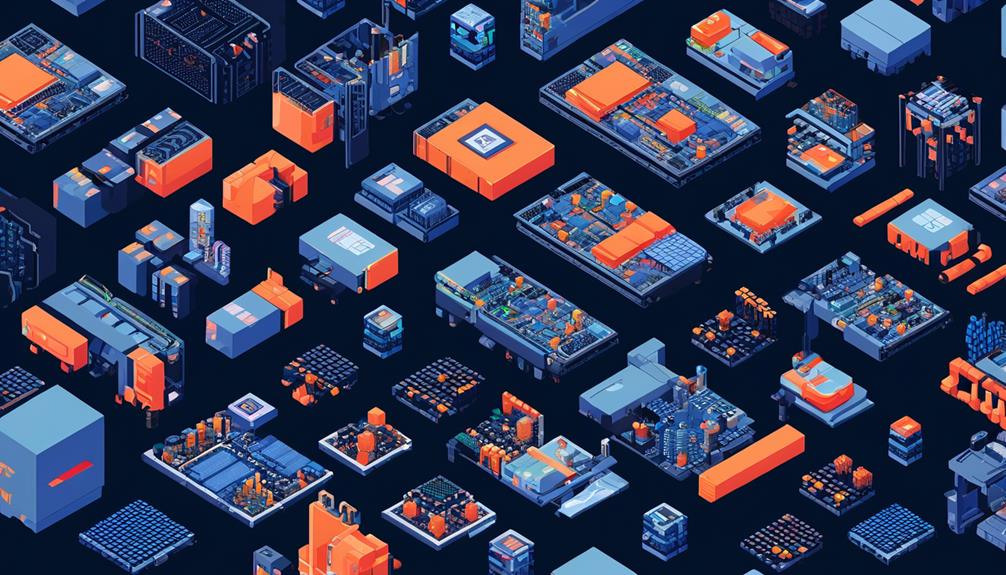
When designing edge hardware for redundancy, key components to consider are:
- Redundant power supply: This ensures continuous operation in the event of a power failure, minimizing downtime.
- Hot-swappable components: These allow for easy replacement of faulty parts without interrupting the system's operation.
- Failover mechanisms: These include redundant networking interfaces that enable seamless transition to backup systems in case of failure, ensuring uninterrupted service availability.
These components play a critical role in maintaining the reliability and resilience of edge hardware systems.
Redundant Power Supply
Redundant power supply is an essential component in edge hardware, providing uninterrupted operation and minimizing downtime. Here are some key points highlighting the importance of redundant power supply in edge computing:
- Redundant Power Supply (RPS) ensures continuous operation of critical servers by providing full power compensation if one source fails.
- Defective power supplies can be replaced without taking the connected device offline, minimizing downtime.
- RPS allows for seamless data recovery in case of failures or disasters, ensuring uninterrupted service.
- RPS is a critical component in edge systems, providing fault tolerance and protecting against hardware failures.
In edge computing, where reliable and uninterrupted power is crucial, redundant power supplies play a vital role in ensuring continuous operation and minimizing disruptions. By providing backup power sources, RPS safeguards against power failures, hardware malfunctions, and other disruptive events, ensuring uninterrupted power supply to critical edge devices.
Hot-Swappable Components
Hot-swappable components are vital elements for ensuring the redundancy and uninterrupted operation of edge hardware systems. These components, such as hard drives, power supplies, and fans, can be replaced on the fly, minimizing downtime and ensuring continuous operation. The following table illustrates the key hot-swappable components and their role in enhancing hardware redundancy in edge computing:
| Component | Role |
|---|---|
| Hard drives | Enable seamless data storage |
| Power supplies | Ensure uninterrupted power supply |
| Fans | Prevent overheating and maintain optimal temperature |
Hot-swappable components make it easier to maintain and manage edge systems, as they enable quick and seamless hardware replacements in remote or distributed environments. They contribute to fault tolerance and high availability by enabling rapid repairs and upgrades, minimizing the impact of hardware failures. In the context of edge computing, the ability to hot-swap components is crucial for ensuring reliable and resilient operations.
Failover Mechanisms
Failover mechanisms play a crucial role in ensuring the redundancy and continuous operation of edge hardware systems. These mechanisms involve automatic switching to redundant components or systems, minimizing downtime and ensuring uninterrupted service.
Here are four key failover mechanisms for redundancy in edge hardware:
- Redundant power supplies: Having multiple power supplies in an edge system ensures that if one fails, the backup automatically takes over, preventing power interruptions.
- Mirrored servers: By maintaining identical copies of data and applications on multiple servers, if one server fails, the failover mechanism redirects traffic to the mirrored server, preventing service disruptions.
- Edge devices: Deploying multiple edge devices in proximity to each other enables load balancing and failover capabilities. If one device fails, the failover mechanism redirects traffic to the functioning devices, ensuring continuous operation.
- Data center failover: When an edge system is connected to a central data center, failover mechanisms can automatically switch to a secondary data center in the event of a primary data center failure, ensuring uninterrupted service.
Incorporating these failover mechanisms into edge hardware is vital to maintain high availability, minimize system downtime, and ensure the continuous operation of edge computing systems.
Best Practices for Implementing Redundancy in Edge Computing
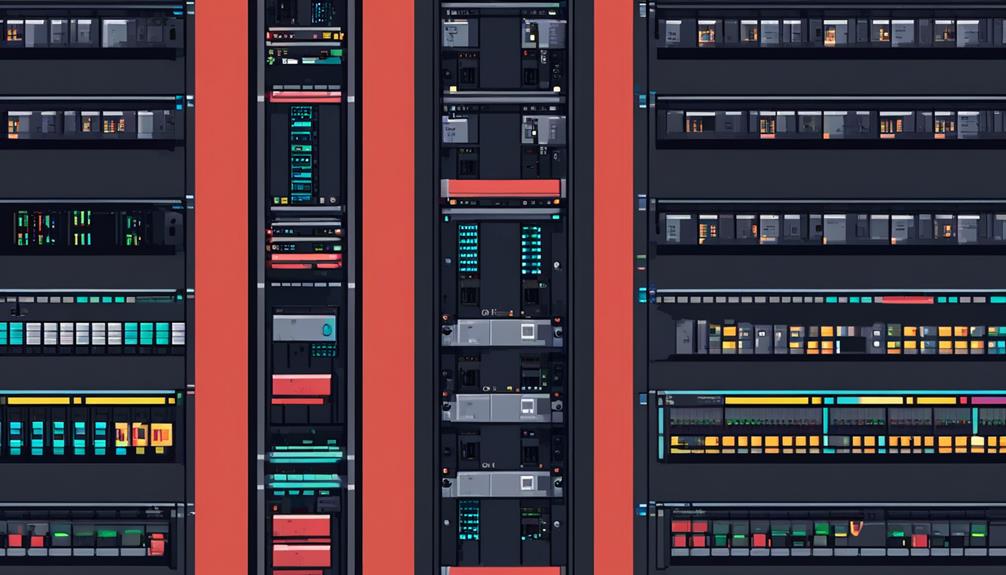
Implementing redundancy in edge computing systems is a critical practice that ensures continuous operation and minimizes downtime while considering industry-specific factors, environmental conditions, and cost considerations. To successfully implement redundancy in edge computing hardware, several best practices should be followed.
Firstly, it is essential to assess the specific requirements and constraints of the edge computing system. This includes understanding the industry's demands, such as real-time processing or high availability, as well as the environmental conditions, such as temperature or humidity variations. By identifying these factors, the appropriate redundancy levels and capacity can be determined.
Secondly, a thorough analysis of the edge computing hardware should be conducted to identify potential single points of failure. This includes evaluating power supplies, storage devices, network connectivity, and cooling systems. Redundancy measures, such as redundant power supplies, backup storage devices, and redundant network connections, should be implemented to eliminate these single points of failure and ensure seamless operation.
Lastly, regular testing and maintenance of the redundant systems are crucial. This includes conducting periodic failover tests to verify the effectiveness of the redundancy mechanisms and ensure seamless transition in case of a failure. Additionally, proactive monitoring of the hardware components and implementing predictive maintenance practices can help identify and address potential issues before they lead to system failures.
By following these best practices, organizations can enhance the reliability and availability of their edge computing systems, minimizing the risk of downtime and ensuring continuous operation. The table below summarizes the best practices for implementing redundancy in edge computing hardware.
| Best Practices |
|---|
| Assess specific requirements and constraints |
| Identify single points of failure |
| Implement redundancy measures |
| Conduct regular testing and maintenance |
Challenges of Redundancy in Edge Hardware
To address the unique challenges that arise when implementing redundancy in edge hardware, organizations must navigate the complexities of distributed deployment and reconceptualize traditional redundancy and replication methods for optimal performance and system resilience. Edge devices are distributed over a wide geography, which requires a different approach to redundancy and replication techniques. Traditional methods do not directly apply to edge computing, necessitating new thinking and approaches to ensure system resilience.
Here are some of the challenges faced when implementing redundancy in edge hardware:
- Limited Resources: Edge devices often have limited resources such as processing power, memory, and storage. This creates challenges when trying to implement redundancy as it requires additional resources for replication or mirroring.
- Network Connectivity: Edge devices are often connected to the network through wireless connections, which can be unstable or unreliable. Maintaining redundancy in such an environment becomes a challenge, as network connectivity issues can disrupt replication and synchronization processes.
- Physical Constraints: Edge devices are typically small and compact, making it difficult to accommodate redundant components. Finding space for additional hardware can be challenging, especially in environments with limited physical footprint.
- Cost Considerations: Redundancy in edge hardware comes at a cost. Mirrored servers offer fault tolerance and data redundancy, but they are more expensive compared to edge devices. Organizations need to carefully assess the cost-benefit trade-offs when implementing redundancy in edge hardware.
Overcoming these challenges requires careful planning and consideration of the unique characteristics of edge computing. Organizations must find innovative solutions that balance system resilience with limited resources and physical constraints.
Redundancy Considerations for Power and Cooling in Edge Systems
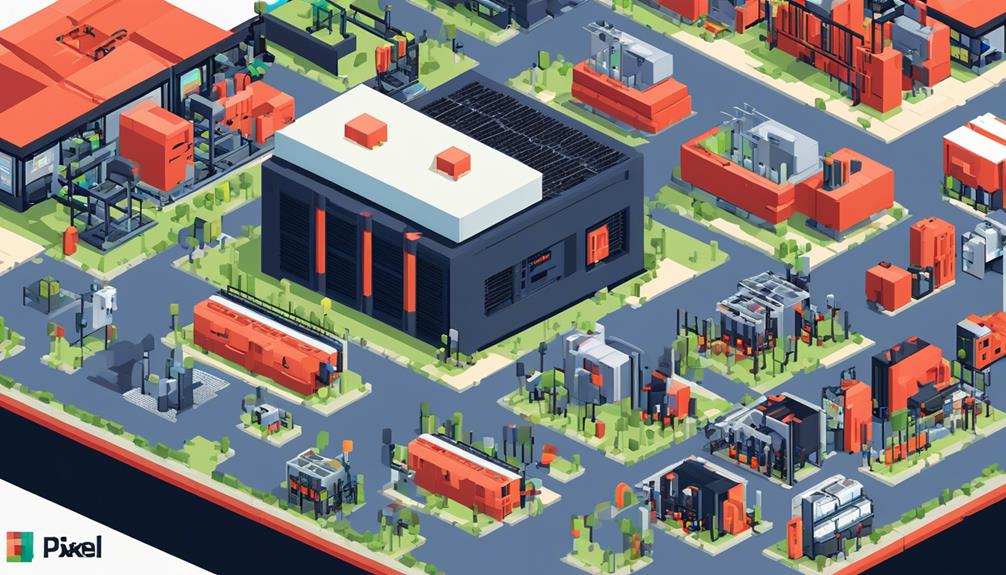
Redundancy considerations for power and cooling in edge systems involve ensuring uninterrupted power supply and efficient cooling mechanisms to guarantee optimal performance and prevent system failures.
In edge computing hardware, where computing resources are decentralized and located closer to the data sources, power and cooling redundancy are critical to maintain the reliability and availability of these systems.
Power redundancy involves the use of multiple power sources, such as dual power supplies or uninterruptible power supplies (UPS), to provide backup power in the event of a power outage. This redundancy ensures continuous operation and prevents data loss or system downtime. Additionally, power redundancy can be achieved through redundant power distribution units (PDUs) and power circuits, allowing for load balancing and seamless power transfer in case of a failure.
Cooling redundancy is equally important in edge systems, as excessive heat can lead to performance degradation or hardware failures. Redundant cooling mechanisms, such as redundant fans or cooling units, ensure that the system is adequately cooled even if one cooling component fails. Additionally, temperature monitoring and control systems can be employed to detect and rectify any cooling issues promptly.
To optimize power and cooling redundancy, it is essential to strategically plan the placement and configuration of edge computing hardware. This includes considerations such as proper airflow management, heat dissipation, and efficient cable management to minimize the risk of hotspots and maximize cooling effectiveness.
Future Trends in Redundancy for Edge Computing Hardware
A growing trend in the future of redundancy for edge computing hardware is the integration of advanced fault tolerance techniques. As edge devices are distributed over wide geography, ensuring efficient performance requires innovative approaches to redundancy and replication.
Here are four future trends in redundancy for edge computing hardware:
- Distributed Redundancy: Edge devices are often deployed in remote and harsh environments, making it essential to distribute redundant components across multiple locations. This approach enhances fault tolerance and reduces the risk of single points of failure, improving overall system resilience.
- Autonomous Failover: In the future, edge computing hardware is expected to incorporate autonomous failover mechanisms. These mechanisms will enable devices to identify failures and seamlessly switch to redundant components or backup systems, minimizing downtime and ensuring continuous operation.
- Dynamic Load Balancing: As edge computing environments become more complex, dynamic load balancing will play a crucial role in redundancy. By intelligently distributing workloads across redundant components based on their capacity and availability, this technique ensures optimal resource utilization and improves overall system performance.
- Predictive Maintenance: To enhance redundancy, edge computing hardware is expected to leverage predictive maintenance techniques. By continuously monitoring the health and performance of components, these systems can detect potential failures in advance and proactively replace or repair them. This approach minimizes the risk of unexpected equipment failures and further improves system reliability.
Frequently Asked Questions
What Edge Computing Means for Hardware Companies?
Edge computing is revolutionizing the hardware industry by introducing new business models and posing unique challenges.
With the shift towards distributed computing, hardware companies must adapt to the changing landscape.
Edge computing's impact on business models can be seen in the increased demand for compact, rugged, and power-efficient hardware. Security considerations are also paramount, as edge computing infrastructure is vulnerable to cyber threats.
Furthermore, hardware companies face challenges in the adoption of edge computing, such as developing scalable and cost-effective solutions.
What Are Some Typical Requirements for These Edge Devices to Carry Out Edge Computing?
Edge devices used for edge computing must meet certain requirements.
They should have low power consumption to ensure efficient operation in remote and resource-constrained environments.
Connectivity options are crucial for seamless integration with existing networks and stable data transfer.
These devices should also possess adequate processing capabilities to perform real-time data analysis.
Additionally, they must be rugged and durable to withstand volatile environments.
Redundancy features are essential for continuous operation and to minimize downtime.
What Are the Edge Computing Devices?
Edge computing devices refer to remote devices that possess computational intelligence to execute computational logic and make decisions without human intervention. These devices, such as red-light traffic cameras, are distributed over a wide geography and provide local processing capabilities.
They offer numerous advantages, including reduced latency, improved performance, and real-time data processing. However, managing edge devices presents challenges in terms of redundancy and replication.
Future developments in edge computing aim to address these challenges and optimize the efficiency of edge computing applications.
How Does Edge Computing Reduce Latency?
Edge computing reduces latency by processing and analyzing data closer to the source, minimizing the distance data needs to travel. This improves network efficiency by reducing the need for data to travel back and forth to a centralized server.
By distributing processing to edge devices, real-time data processing and decision-making can occur at the edge, eliminating the delay caused by sending data to a remote data center.
Additionally, edge devices enable local data processing, reducing round-trip time for data transmission and subsequent response, further reducing latency.

